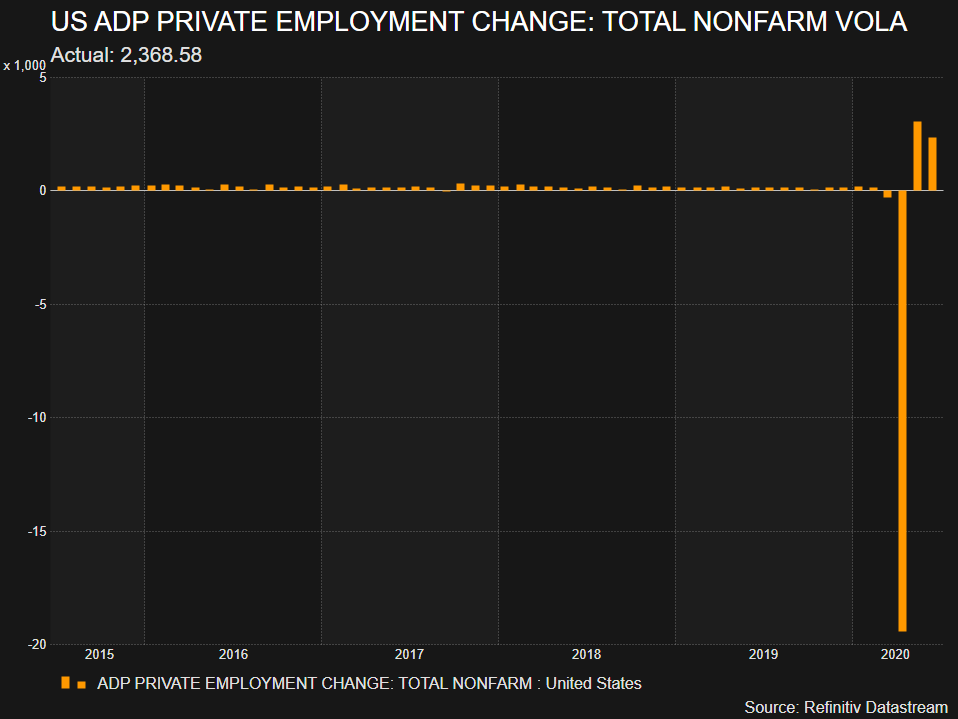A snapshot of overnight moves and a look to the upcoming Australasian session.
Market Moves
Wrap
Overnight, US markets had a quiet session. The tech-heavy Nasdaq was the clear outperformer, rising 1.0% to close at a new all-time high. The broader market did not fare as well, with the benchmark S&P500 up a more modest 0.5%, and the Dow Jones Industrial Index declining 0.3%. Importantly, the so-called 'fear gauge', the volatility index (VIX), logged its third straight large fall, down another 5.95%.
US investors appeared to have made peace with the fact that daily confirmed cases of cpvod-19 are sitting in the 'low 40 thousands' (another 43,000 cases reported yesterday). Perhaps helping soothe the market's nerves, BioNTech and Pfizer Inc reported that their experimental vaccine had generated neutralizing antibodies at a higher level than what has been reported in people recovering from a COVID-19 infection. This is the most detailed and promising information so far among the vaccine candidates being tested in the U.S.
Metals prices on the LME were again mixed. Copper was once again the clear outperformer as it hit another 5-month high on the back of supply concerns in Chile, and better than expected Chinese manufacturing data out Tuesday. Nickel prices were up 0.5% as the market surplus narrowed.
Iron ore prices were slightly lower, down 0.6% on the Chinese Dalian exchange, and 0.4% lower in the $US price.
Gold gave back some of its recent gains, falling a modest 0.6% with spot gold now trading at US$1769.99 an ounce.
Crude oil edged 0.6% higher as it was reported US stockpiles had eased by 7.2 million barrels last week, while natural gas was down 0.5%.
The ASX200 Share Price Index was 42 points higher, closing the evening session at 5945. That's a 12 point premium to yesterday's ASX 200 close of 5934. The SPI has been trading at around a 15-20 point discount lately, so this implies that the ASX 200 should trade around 0.5-1% higher at the open.
The best performer from the ASX 200 yesterday was NEXTDC (NXT) which rose over 8% after it announced that contracted commitments at its NSW data centre facilities had increased by approximately 4MW, to more than 36MW. NEXTDC’S Chief Executive Officer Mr Craig Scroggie said, “The demand for our data centre services continues to accelerate and exceed our expectations."
The worst performer from the ASX200 yesterday was Tuas (TUA) which fell over 24% as Standard and Poors (S&P) announced it would be dropping the Singapore mobile network provider from the S&P ASX 200 Index.
Today, investors will focus on trading updates from online travel company Webjet (WEB) which announced a $100 million convertible rights issue after market close Wednesday, and home builder and construction company Tamawood (TWD) which announced today that it would reinstate dividends for the next half-year.
On the economic data front, local markets will look to the release of Australian trade balance data due at 11:30 EST, and tonight in the USA, data on non-farm payrolls and the unemployment rate. This data is typically seen as the biggest data release on the monthly calendar.
Macro Economy
Australia
Home prices fall again, remain higher YoY
Australian home prices slipped for a second month in June as coronavirus lockdowns and rising unemployment cooled a once red-hot market, though a sharp rebound in sales was a positive for economic activity.
Data from CoreLogic Wednesday showed home prices across Australia fell 0.7% in June, compared to a 0.4% decline in May. Prices remained 7.8% higher compared to June 2019.
Prices fell across all capital cities. Sydney prices were down 0.8%, while Melbourne fell 1.1% and Brisbane 0.4%.
"A variety of factors have helped to protect home values from more significant declines, including persistently low advertised stock levels and significant government stimulus." said CoreLogic's head of research Tim Lawless.
Lawless also noted that a loosening of shutdown measures had resulted in a rebound in sales, which jumped 29.5% in June after a 21.5% gain in May. Listings had also risen sharply, and clearance rates had also rebounded.
A healthy housing market is a major positive for the broader Australian economy, as it feeds into increased discretionary spending (through refurnishing etc.) and aids state governments balance their dented budgets via fees from stamp duty.
USA

Data from human resources company ADP showed a second impressive jump in monthly job creation in the US, with over 2.3 million jobs added in the month of June. This was however approximately 500 thousand fewer jobs than the market was expecting. On the plus side, May's figure was revised higher, now showing 3 million gain (which was initially reported as a loss!).
Clearly there is significant volatility in the data as the US economy tries to steady itself after covid-19 shutdowns. Markets will watch for official unemployment data due tonight.